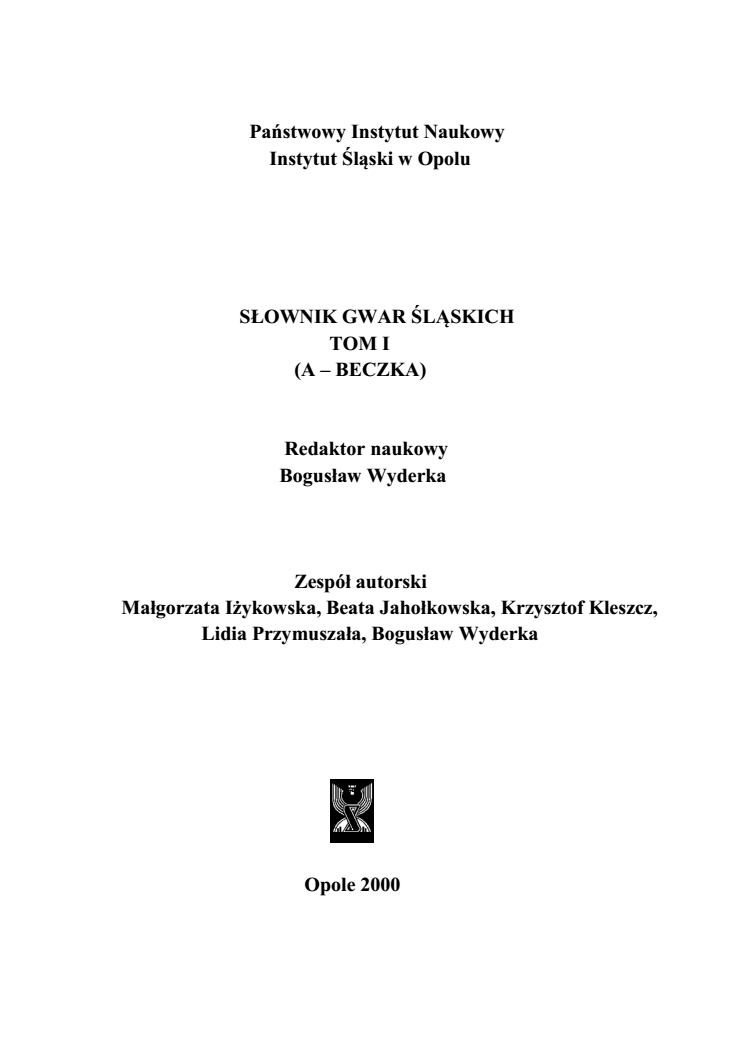
Słownik Gwar Śląskich, tom I (A - BECZKA)
"Glossary of Silesian Dialects" is the result of many years of scientific work of several generations of linguists from the Silesian Institute in Opole, Poland.
More...We kindly inform you that, as long as the subject affiliation of our 300.000+ articles is in progress, you might get unsufficient or no results on your third level or second level search. In this case, please broaden your search criteria.

"Glossary of Silesian Dialects" is the result of many years of scientific work of several generations of linguists from the Silesian Institute in Opole, Poland.
More...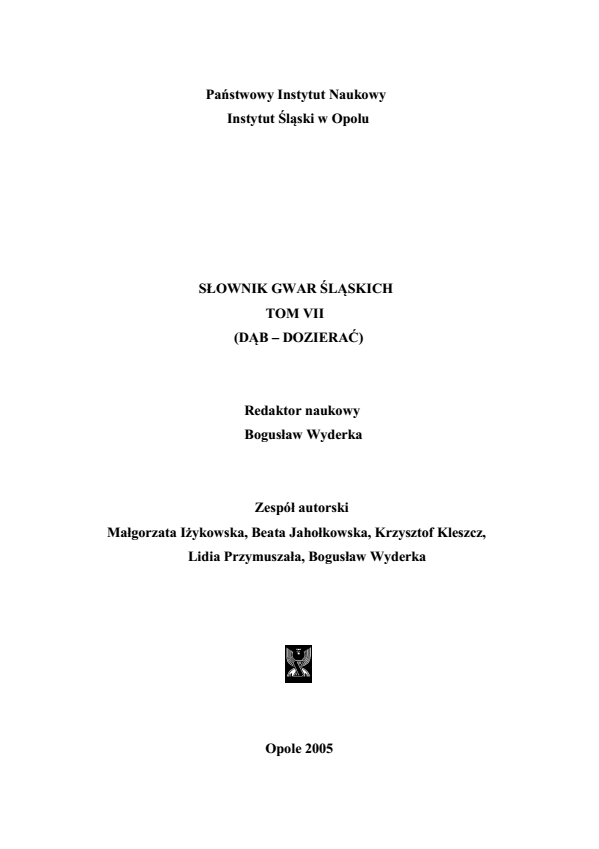
"Glossary of Silesian Dialects" is the result of many years of scientific work of several generations of linguists from the Silesian Institute in Opole, Poland.
More...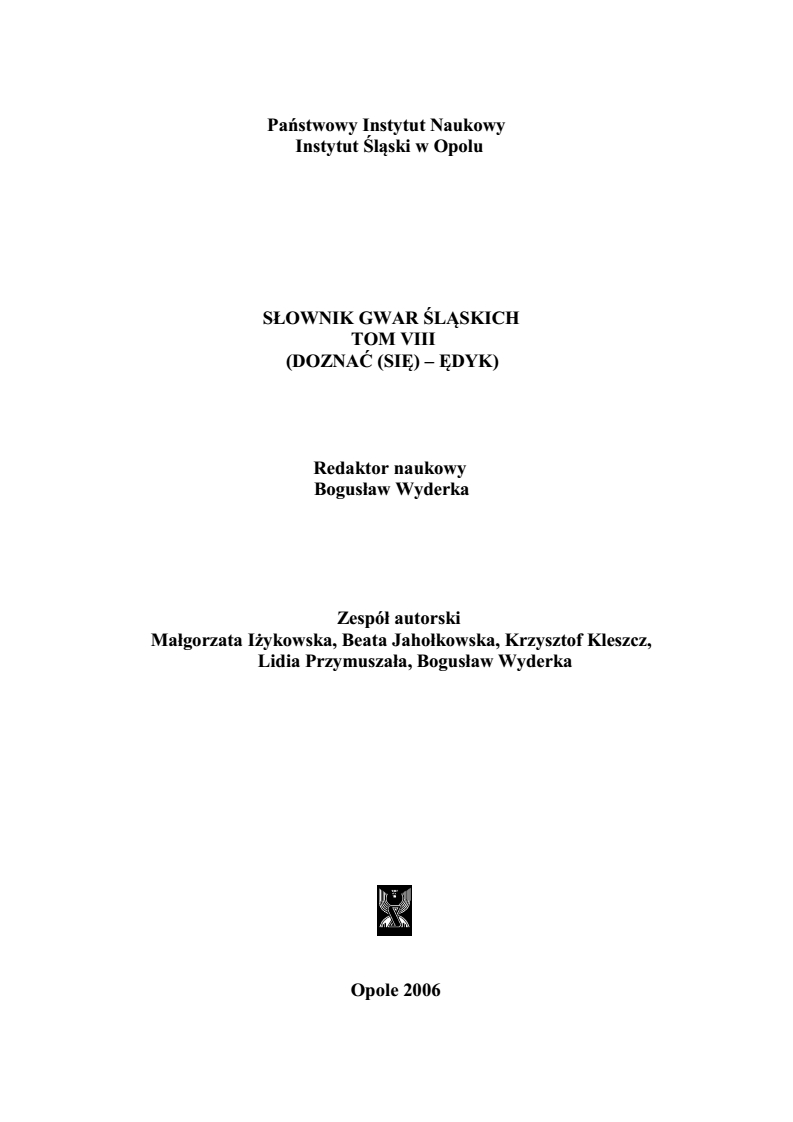
"Glossary of Silesian Dialects" is the result of many years of scientific work of several generations of linguists from the Silesian Institute in Opole, Poland.
More...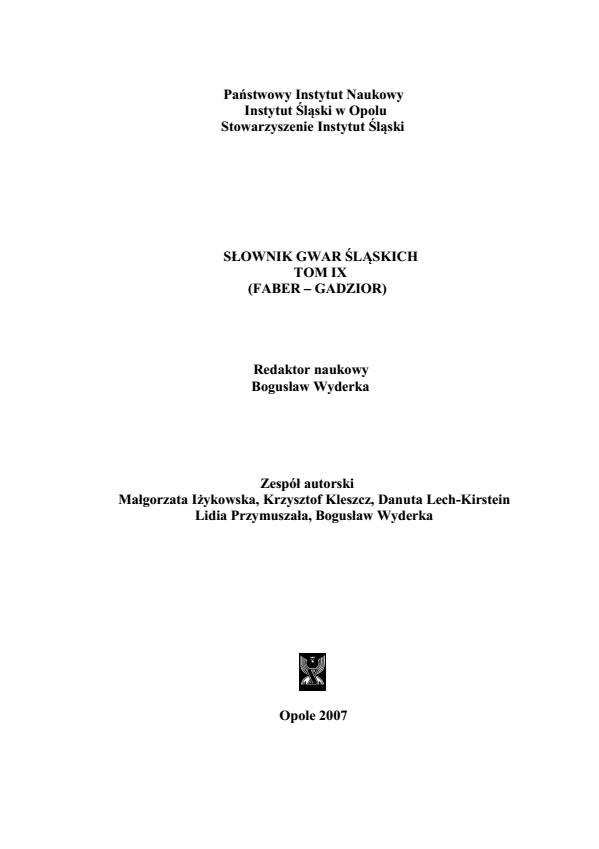
"Glossary of Silesian Dialects" is the result of many years of scientific work of several generations of linguists from the Silesian Institute in Opole, Poland.
More...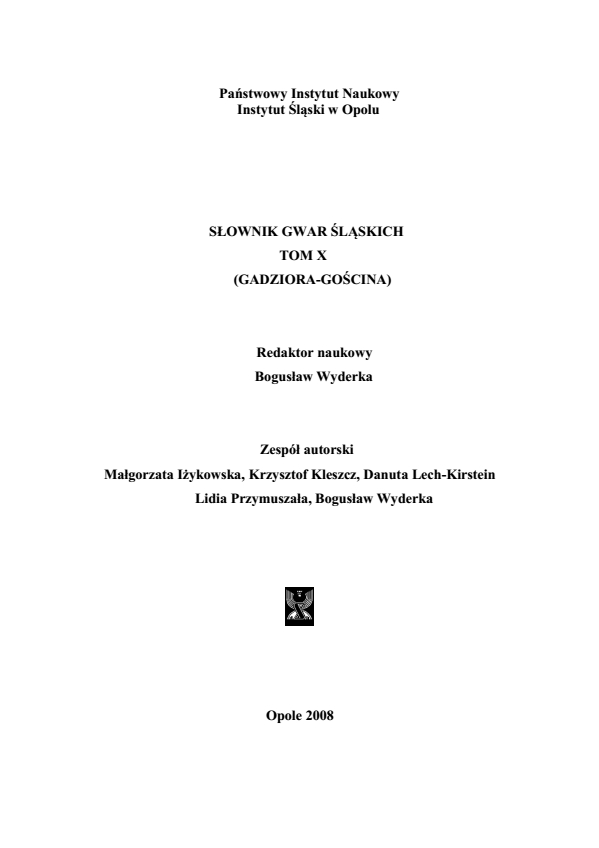
"Glossary of Silesian Dialects" is the result of many years of scientific work of several generations of linguists from the Silesian Institute in Opole, Poland.
More...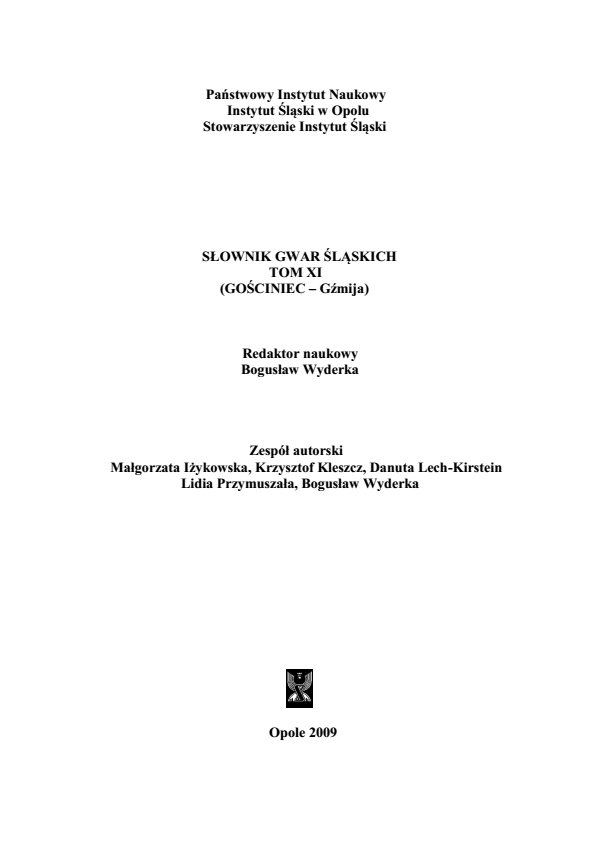
"Glossary of Silesian Dialects" is the result of many years of scientific work of several generations of linguists from the Silesian Institute in Opole, Poland.
More...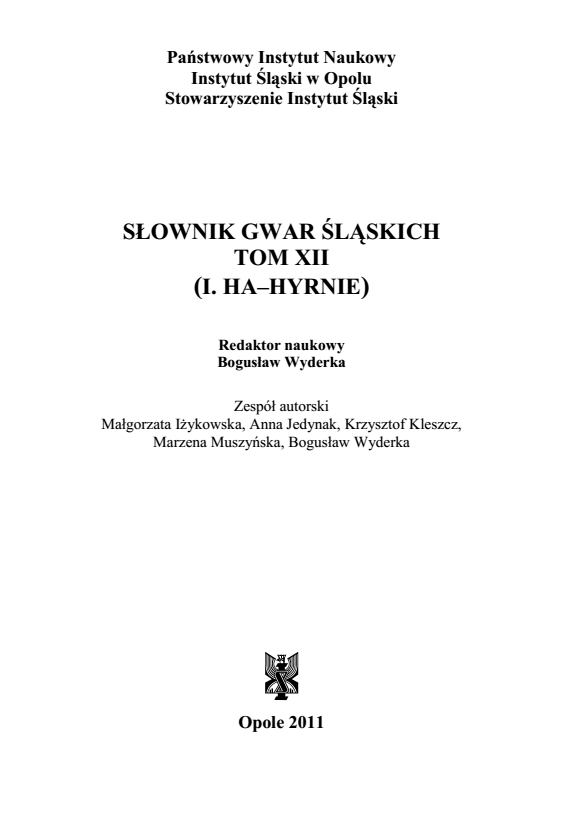
"Glossary of Silesian Dialects" is the result of many years of scientific work of several generations of linguists from the Silesian Institute in Opole, Poland.
More...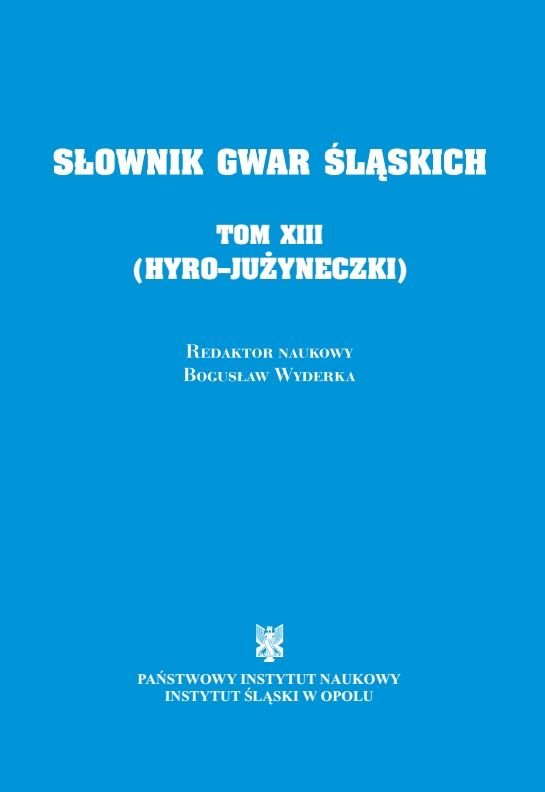
"Glossary of Silesian Dialects" is the result of many years of scientific work of several generations of linguists from the Silesian Institute in Opole, Poland.
More...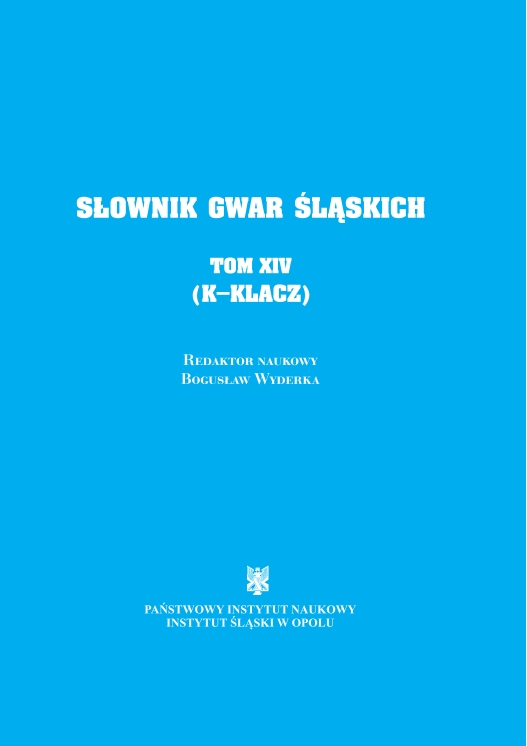
"Glossary of Silesian Dialects" is the result of many years of scientific work of several generations of linguists from the Silesian Institute in Opole, Poland.
More...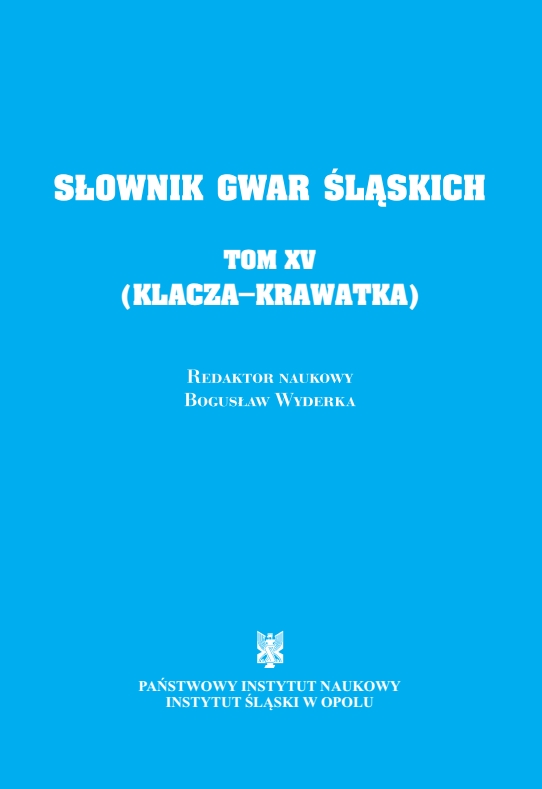
"Glossary of Silesian Dialects" is the result of many years of scientific work of several generations of linguists from the Silesian Institute in Opole, Poland.
More...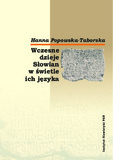
In this work, consisting of 7 chapters (I. An outline of the early history of linguistic researches on the ethnogenesis of the Slavs; II. Linguistics and other disciplines conducting researches on the early history of the Slavs; III. The hydronymic aspect of research on the ethnogenesis of the Slavs; IV. Slavic ethnonyms and anthroponyms; V. The phonetic differentiation of Slavic; VI. The role of vocabulary in research on the ethnogenesis of the Slavs; VII. The stages preceding the historical past of the Slavs), various theories and hypotheses based on linguistic facts and connected with the ethnogenesis of the Slavs are presented and analysed. The final conclusions based on the research could be stated as follows: The Slavs broke away from the great Proto-Indo-European family; on the basis of linguistic facts we cannot, however, situate their original homeland without some hesitation, nor do we know exactly how the process of differentiation took place and in what way the various language groups emerged. There exist many Balto-Slavic linguistic connections that point to a close or common development of these two language groups. However, on the basis of linguistic facts alone, it is difficult to determine the location of the original homeland of the Slavs and Balts. At some point these two ethnic groups separated; we cannot, however, state the reason for this break, nor what factors brought about the development of linguistically distinct Slavic. From the linguistic data one can assume that at an earlier points in history there existed contacts between Slavic, Italic and Germanic languages, but where and when it occurred has until now not been thoroughly explained. The presence of Celtic traces in the Slavic languages, which has been variously interpreted (some linguists maintain that in the remote past the Slavs could have been in contact with the Celts) could be analysed only with difficulty since knowledge about Celtic dialects is scarce. There undoubtedly existed some Slavic-Iranian connections, but it is difficult at present to determine the scale and character of these contacts. Further studies in this field are recommended. In the case of contacts between the Slavs and Germans it is very important to draw up a detailed chronological chart of the various phases of the contacts. Here linguists encounter great problems owing to a lack of sufficient criteria to separate the Gothic from the Proto-German linguistic layer. At present we are not in a position to determine unequivocally the location of early Slav homelands either in the light of hydronyms, or through the analysis of Slavic ethnonyms or botanical and zoological terminology, or on the basis of contemporary lexical divisions. We do know that the real Slavs, not the supposed ones, appear on the historical stage in the sixth century A. D., whereas the reconstruction of the early Slavic phonetic and morphological system points to the extreme uniformity of the Proto-Slavic language. On the basis of various data, one can thus maintain that the phonetic differentiation of the Slavic language occurred in the second half of the first millenium A. D., when the Slavs suddenly began to expand, occupying sizeable areas of southern, north-eastern and north-western Europe. One can thus speak of a demographic explosion which in turn brought about an expansion of a Slavic ethnos formerly centered on a much smaller area. Pre- and post-war researches have proposed whole range of solutions to the difficult problem of Slavic ethnogenesis. The author of this work refrains from providing more detailed conclusions because she claims, on one hand none of the existing theories is convincing and on the other she is of the opinion that on the basis of the linguistic facts it is impossible to carry out a full reconstruction of the prehistory of the Slavs.
More...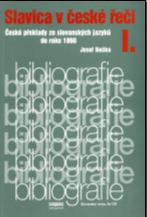
Problematika mezislovanských vztahů a styků byla vždycky velmi závažná. Vždyť hrála významnou úlohu nejen v dějinách Slovanů a jejich bezprostředních sousedů, nýbrž i v dějinách světových, a její zkoumání je tudíž jedním z nejpřednějších úkolů slavistů. V nejnovější době pak tato otázka nabyla ještě větší důležitosti a aktuálnosti. Není náhodné, že Akademie věd SSSR r. 1942 ve chvíli velkých dějinných událostí stanovila jako základní úkoly své slovanské komise, aby zkoumala: a) roli Slovanstva ve světových dějinách a kultuře; b) roli ruského národa a jeho kultury v dějinách Slovanů; c) problém ethnogenese slovanských národů; d) kmenové a kulturní vztahy slovanských národů v jejich minulosti a přítomnosti na základě historických faktů, folklóru, jazyka, literatury, věcných památek atd.; e) dějiny boje slovanských národů za jejich svobodu a nezávislost; f) vznik a rozvoj státu a práva slovanských národů.
More...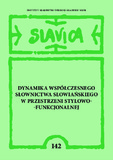
This volume of studies by Polish and international linguists is devoted to changes in modern Slavic languages, which are especially noticeable in the spheres of vocabulary and word formation. Taking into consideration the stylistic and functional aspect of lexis development allows for a better understanding of the dynamics of language change and the efficacy of communicational acts. The purposeful and pragmatic character of communicational behaviour manifests itself widely in the social, political and cultural contexts considered by the Authors. The works comprising the volume are divided into three thematic sections: - Phenomena, processes and tendencies in the development of specialist lexis (terminology); - Word formation and lexical mechanisms dynamics; - Lexical change in modern language communication and discourse. The sections help organize the volume by highlighting the dominant theme in particular texts. The scopes of the sections are, nevertheless, not sharply delineated – each section is to an equal extent devoted to the complex and multifaceted subject-matter of the tendencies and changes in modern Slavic vocabulary. Most of the works comprised in the volume adopt a contrastive approach, the remaining ones can serve as bases for contrastive studies. The text analyse the rich material of the Slavic languages – Polish, Czech, Slovak, Belarusian, Russian, Ukrainian, Bulgarian and Slovene – as well as of other languages, like Modern Greek.
More...
This monograph presents a detailed analysis of word order behaviour of possessive pronouns in Old Czech noun phrase. This is a phenomenon that has not been systematically studied in Czech paleo-bohemistics yet. The data analysed in this book come from Old Czech prose written approximately between the mid-fourteenth century and the end of the fifteenth century.
More...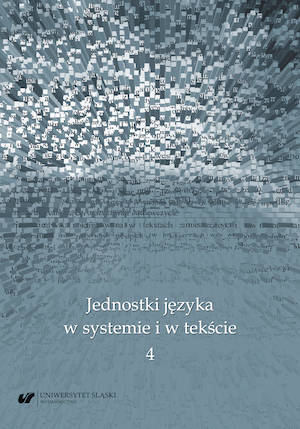
The set of problems engaged in the texts which are presented in the monograph reflects the multifariousness of research perspectives in modern Slavic linguistics with reference to both traditional and novel methodological approaches. The authors’ focus has to do with the problems of the description of the units of the Polish, Russian, Ukrainian, Czech and Croatian languages at the particular levels of these languages. The linguistic units are examined not only as elements of a system but also as components (which are varied genre-wise) of early and modern texts. Apart from the analyses which draw from structuralist traditions there are also ones in which linguistic phenomena are considered in a broad social-political-cultural context. The publication is a collection of pieces which are devoted both to one language as well as comparative studies: Polish-Russian, Polish-Czech, Polish-Croatian, Russian-Czech ones. There are also texts which are devoted to the problems of translatology. The broad range of problems which are engaged by the authors from Poland and beyond enables the reader to familiarise himself or herself with the areas and trends of work conducted by the particular academic centres. We hope that it will also become a source of inspiration for further research endeavours.
More...
The publication presents contributions from a scientific conference, which was attended by bachelor, master and doctoral students on 15 March 2018. Two contributions deal with teaching Czech language as a foreign language (Jesika Oulehlová: Internationalism of Greek Origin and Alena Novotná: Common Mistakes of Pupils with a Different Mother Tongue in the Greek School in Greece), one contribution is devoted to the issue of communication (Miroslav Jindra: From the Stage to Auditorium ... /and back/. On the issues of communication with the theater stage with children's viewer), others are focused on literature for children and youth (Jitka Pušová: The Picture of Rural Reality in the Literature for Children and Youth between 1945–1999, Marie Drábková: Translations of Soviet literature for children and youth in the production of the State Publishing House of Children’s Books in 1949–1959) and the literature written by children (Anna Hronová: Juvenile authors and their representation in the Czech literature between 1989–2015). The publication is concluded by papers oriented to literature for adults (Kristýna Klejdusova: Jirasek’s drama Father – analysis of characters and motifs in the context of the general trends of the Czech theater of the 1990s and Ondřej Pechník: Thematization of exoticism in Czech prose after 2000).
More...
The publication presents contributions from a scientific conference that took place on 23rd March 2017. There were university students of bachelor’s, master’s and doctor’s study who participated at the conference. Two articles are literary (Šárka Ivanovičová – Circus Motives in Ivan Olbracht’s Works and Lucie Mikušová – Characters of Sherlock Holmes and John Watson in Rudolf Čechura’s Stories), four articles are didactical (Iva Janoušová – Pupils’ Reading Literacy in Connection with Usage of Critical Thinking Methods in Teaching, Petra Tužilová – Look at Medial Image of Children’s Readership and Reading Literacy in the Czech Republic, Hana Havelková – Pupil with a Different Mother Tongue in Process of Czech Language Acquirement and Anna Heraltová – Theoretic Foundations for Verification of Romany Children’s Ability to Work with Texts at Elementary Schools), two articles are focused on linguistics (Pavlína Zouharová – Advertising – its Types and Language Means and Jesika Mlčochová – Creation of E-learning Materials for Portal Umíme česky.cz).
More...
Proceeding of the conference held on 18th March 2021. The publication contains studies by Gabriela Čermáková (“Contemporary Situation of Podkrkonošský Dialect”), Radim Ošmera (“The Methodology of the Research of Other Language”), Veronika Tinková (“Language Specifics in the Czech Language Education of Bilingual Children of Primary School Age in the Czech-French Environment”), Zuzana Procházková (“Alternative Methods in the Czech Language Education on Secondary Schools”), Miroslav Jindra (“I Am Vinnetou!?: Elements of Identifications with a Literary Work and Theatrical Performance of Children at 8–9 age”), Tereza Švandová (“What is Lettrism?”), Klára Březinová (“A Portrait of Virgin Mary in Elected Works of Jaroslav Durych”), Ondřej Zabloudil Pechník (“Jungle, My Love, or A Chesty Man and a Story Thief by Josef Formánek”) and Alexandra Gončarenko (“A Motif of the Initiatory Journey in Works of Martin Ryšavý and Vladimír Sorokin”).
More...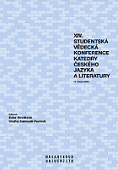
Proceeding of the conference held on 17th March 2022. The publication contains studies by Zuzana Procházková (“Comparation of Word Formation in the Older and Younger Generation in Selected Villages of the East Moravian Dialect”), Ivana Večeřová (“Specifics of Contemporary Private Electronic Communication”), Radim Ošmera (“Lecturers' Approach to Czech Realities in Teaching Students with Different Mother Tongues”), Tereza Holzerová (“Non-violent Communication in a Czech Language Lesson”), Miroslav Jindra (“Selected Aspects of a Literary Work and their Reception by a Child Reader: Results of Children's Reading Research in the Form of Group Discussion”), Magdaléna Lípová (“Psychosocial Tasks in Early Adolescence in Selected Prose for Children and Youth”), Klára Březinová (“A Theme of Virgin Mary in Selected Works by Jakub Deml”), Tereza Pořízková (“Identity and its Forms in the Book Doupě”), Ondřej Zabloudil Pechník (“The Image of the Rainforest in Czech Prose after 2000”) and Tereza Švandová (“French Avant-garde Artistic Movements Originated from Lettrism”).
More...
The Conference Proceedings comprise the papers presented at the Annual International Conference of the Institute for Bulgarian Language held on 15th and 16th May 2024.The authors of the papers in the Proceedings are researchers affiliated with the following research institutions in Bulgaria and abroad: Institute for Bulgarian Language at the Bulgarian Academy of Sciences; Veliko Tarnovo University, Bulgaria; Cyril and Methodius Scientific Center at the Bulgarian Academy of Sciences; Medical University, Plovdiv, Bulgaria; University of Plovdiv, Bulgaria; Sofia University, Bulgaria; Academy of Humanities and Economics, Lodz, Poland; Institute of Linguistics Yorgu Iordan – Alexandru Rossetti at the Romanian Academy of Sciences; Institute for Linguistic and Cross-Cultural Studies, Berlin, Germany; Institute of Slavic Studies at the Russian Academy of Sciences; V. V. Vinogradov Russian Language Institute at the Russian Academy of Sciences; Odessa National University I. I. Mechnikov, Ukraine; Saarland University, Germany; Saint Petersburg State University, Russia; Adam Mickiewicz University, Poznan, Poland; University of Bucharest, Romania; University of Zagreb, Croatia; University of Tirana, Albania.The papers included in the Proceedings present the current achievements and trends in the research on the Bulgarian language in Bulgaria and around the world, as well as the accomplishments of the Institute’s departments, including the results of work on national and international projects and cooperation with Bulgarian and foreign research centres.
More...